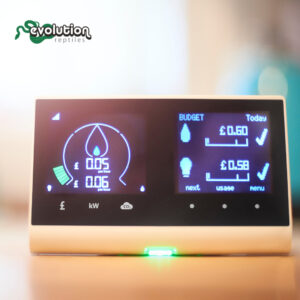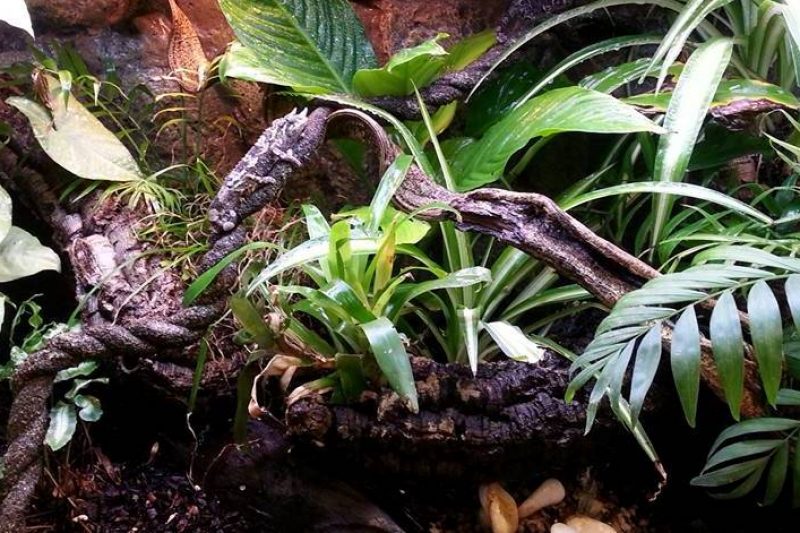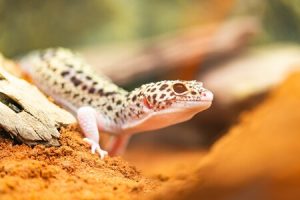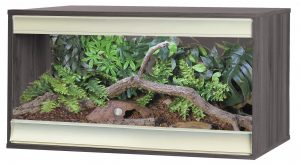
How much does it cost to run my vivarium?
How much does it cost to run my vivarium? We are all becoming more aware of energy costs as the price continues to rise. So

Setting up a new enclosure, especially for the first time, can be very confusing. There are a lot of questions that we are commonly asked regarding heating, lighting, measuring and controlling temperature, and all of them are easy to answer once you have a little experience under your belt.
One of those questions that we are asked a lot is ‘where should I put this thermostat probe?’. It’s one of those questions that seems obvious once you have assembled a vivarium or two, but appears to be utterly baffling the first time you do it!
In this guide we will cover why you need a probe on your thermostat, where it should be placed and the reasons we put it there.
Before we go into where you should put the probe, let’s take a little look at why we are doing it. Your thermostat is the piece of equipment that controls temperature. This is the item that you program with the temperatures that you want to achieve, day and night. Whichever type of heating you are using – deep heat projector, ceramic heater, halogen bulb or even heat mat – will be plugged into the thermostat.
A thermostat is programmed to increase or decrease the power supplied to the heating element. The sensor is contained in the end of the probe, and it tells the thermostat what the temperature surrounding the probe is. This way, the thermostat can increase or decrease the power to the heating element, which raises or lowers the temperature.
Remember that the probe will only read temperature where it is positioned. For reptiles, we need to create a thermal gradient from the warmest spot to the coolest so that your reptile can control their own body temperature.
There are three methods of probe placement. You can either place the probe at the warm end, the cool end, or the middle. Each one works slightly differently, but the end result should be the same.
Warm end: place the probe at the warmest part of the vivarium, and set the thermostat to the highest temperature you want to achieve. Check the temperatures at the warm end, cool end and middle with a digital thermometer. This will ensure that the warmest area doesn’t get over your set highest temperature.
Cool end: place the probe at the coolest part of the vivarium, and set the thermostat to the lowest temperature that you want to achieve. Check the temperatures in the rest of the vivarium with a good quality digital thermometer. This method ensures that your coolest area doesn’t overheat.
Middle: place the probe in roughly the middle of the vivarium, and set the thermostat to the middle of the temperature range you are trying to achieve. Using this method it is vitally important to check the temperatures around the rest of the vivarium with a good quality digital thermometer. This method relies on the area toward the heating element being warmer, and the area furthest away being cooler.
Lower vivariums are usually used for terrestrial (ground living) reptiles and amphibians. With these types of habitat, we are more concerned with the temperatures that are achieved where the animal is spending its time – on the ground!
For animals that like a lot of heat – bearded dragons, uromastyx, collared lizards, for example – use the warm end method. Set your thermostat to the highest temperature you would like to achieve, and place the thermostat probe directly under the heat source. This should ensure that your basking area doesn’t overheat, but makes sure that the temperature is high enough for reptiles that like it warm.
Temperate species such as corn snakes, European green lizards and many toads will benefit from the middle placement method. The area toward the heating element will be warmer, and the end farthest away will be cooler. Set your thermostat to the middle of the temperature range, and place the probe roughly in the middle of the vivarium on the ground. Check your temperatures with a good quality digital thermometer, and adjust the thermostat setting until you are achieving the temperatures you require.
The cool end method is particularly useful for species like fire salamanders and other amphibians that don’t like too much heat. By placing the thermostat probe in the coolest area and setting the thermostat to the lowest temperature that you need, you are ensuring that the temperature doesn’t go higher than your pet needs.
Taller vivariums are used for arboreal (tree living) animals, and the process is a little different in this sort of habitat. We are still aiming for a temperature gradient, but instead of it being along the ground it is now vertical. The warmest area will be at the top, and the coolest area on the ground – warm air rises!
Although the three methods mentioned above can be used, thermostat probe placement in a tall vivarium is usually a combination of the warm end and middle methods. Most arboreal animals can be quite shy of sitting right in the open, so make sure that there is a warm area that is shaded with leaves or branches. This dappled shade effect will also allow them to absorb UV without sitting out in the open, which can be stressful.
Place the thermostat probe in the shaded basking area – cable ties are very useful for fixing probes to branches! – and set the temperature on the thermostat to the required temperature. This is usually the ambient (background) warm end temperature. This ensures that the more open basking spot is slightly hotter, which gives your pet the choice to openly bask for a short time, or sit under cover and warm up.
Make sure that you keep an eye on the temperatures lower down in the enclosure with a good quality digital thermometer. If the vivarium is very tall, you may need to add supplemental heating to ensure that the temperature on the ground does not go too low.
The actual process of positioning the thermostat probe is very similar no matter which method you are using, and in what size or shape of vivarium. Remember what you are trying to achieve – a gradient from warmest to coolest – and what sort of animal you are creating a habitat for
Remember that this is one process that is more complex to describe than it is to do.
It really is that easy!
If you would like further advice or you are not sure how to set your new vivarium or thermostat up, please feel free to give us a call or pop in to the store to speak to one of our reptile experts. We’re always happy to help! We can be reached by email, Facebook or Instagram messenger or by phone – or contact us the old fashioned way, and come to the store for a chat.
We have a full range of vivariums and equipment to house your new pet, so pop in to speak to us or drop us a line. We also have an extensive range of care sheets on our website, so check out the care hub to see how we can help. Our blog is full of useful and informative articles too!

How much does it cost to run my vivarium? We are all becoming more aware of energy costs as the price continues to rise. So

Once we have decided on what species of reptile we want to keep, we have to assemble the equipment needed for it to live a

When it comes to finding the best vivarium for your reptile pet – especially in the UK – most of us start thinking about wooden
Copyright 2021 Evolution Reptiles
All rights reserved.